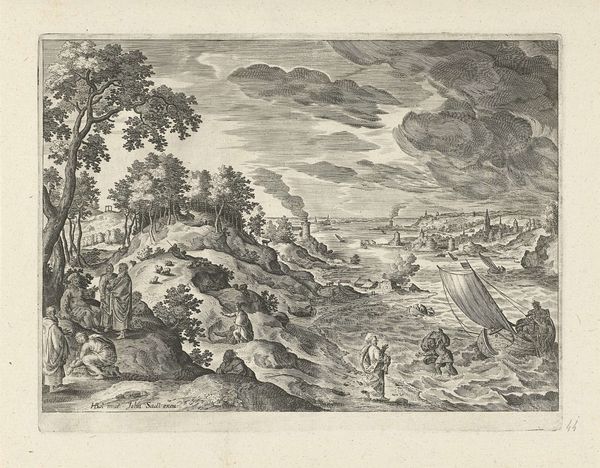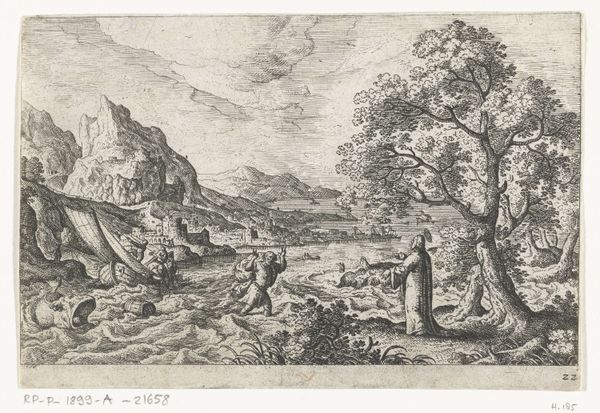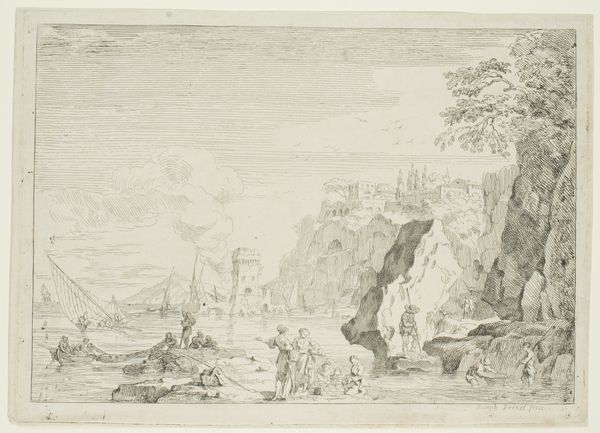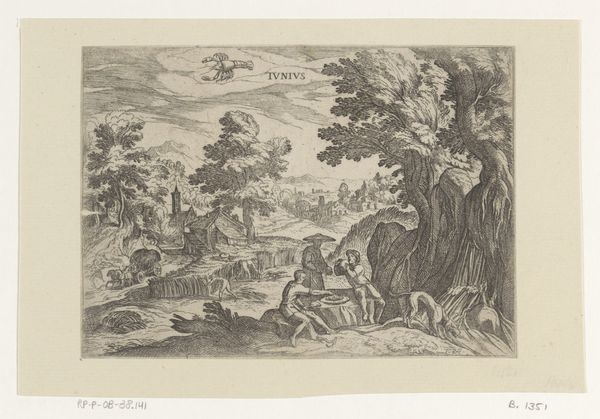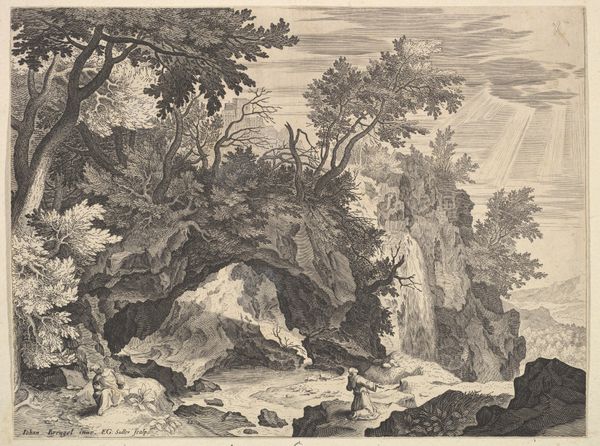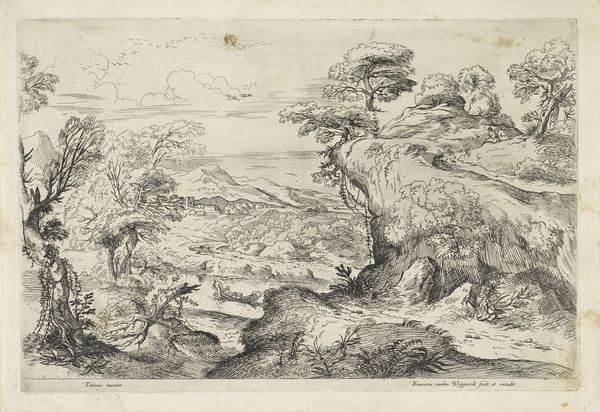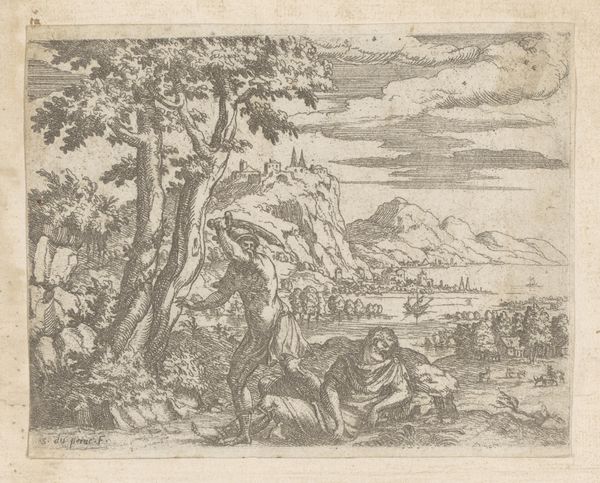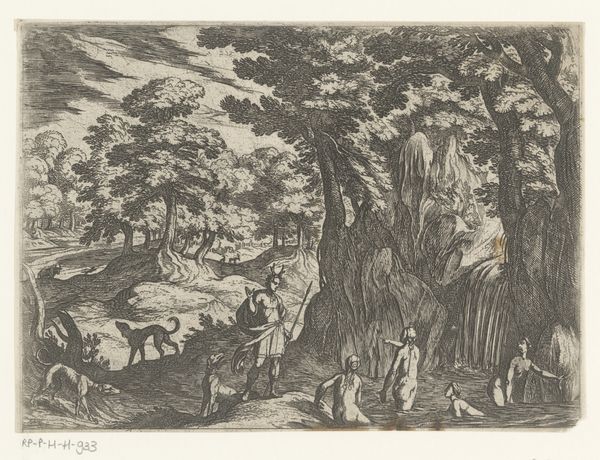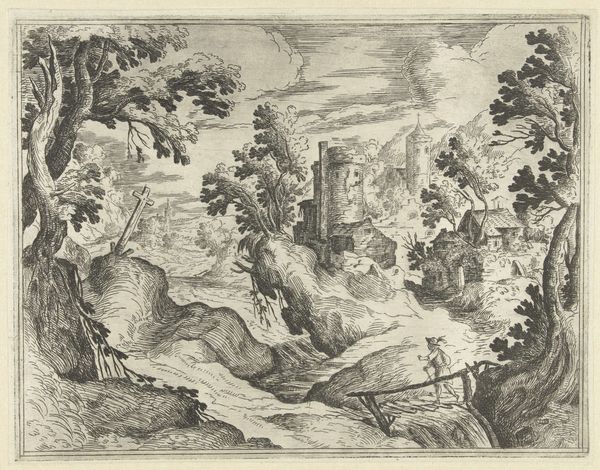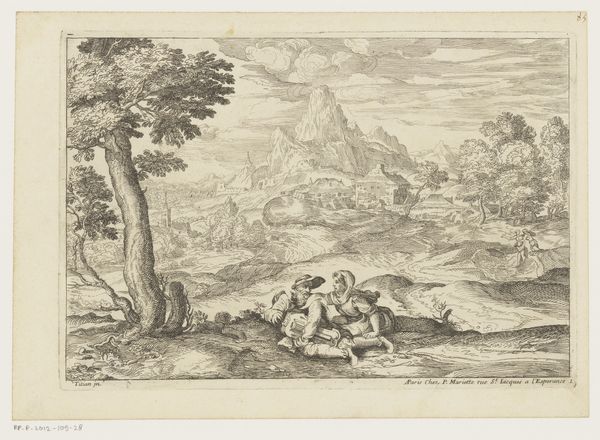
print, engraving
#
pen drawing
# print
#
pen illustration
#
pen sketch
#
old engraving style
#
landscape
#
figuration
#
personal sketchbook
#
ink drawing experimentation
#
pen-ink sketch
#
pen work
#
sketchbook drawing
#
history-painting
#
italian-renaissance
#
sketchbook art
#
engraving
Dimensions: height 140 mm, width 194 mm
Copyright: Rijks Museum: Open Domain
Editor: So, here we have "Landscape with the Rape of Europa," an engraving made sometime between 1565 and 1630 by Antonio Tempesta, currently held at the Rijksmuseum. The frantic energy of the figures on the shore really contrasts with the tranquil landscape depicted, what do you make of this juxtaposition? Curator: It's fascinating how Tempesta uses this idyllic landscape to frame a scene of violence. Consider the politics of imagery at the time. This wasn't just about illustrating a mythological story. It was about power, the power of the gods and, by extension, earthly rulers who often identified with them. The tranquil landscape almost normalizes the abduction, doesn't it? Do you think this was intentional or simply a convention of the time? Editor: I hadn’t thought of it that way. So, depicting the abduction within a beautiful landscape actually lends a kind of legitimacy to the act, subtly reinforcing the power dynamic? Curator: Precisely. Also, think about the context of viewing these engravings. They weren’t necessarily hung in private homes as decorative pieces. They were often part of larger illustrated books or disseminated as individual prints, shaping public perception and reinforcing certain ideologies. How do you think access to this kind of imagery, then and now, impacts the understanding of the myth of Europa? Editor: That's a powerful point. Now that you mention it, its place within society makes me consider what responsibility, if any, the artist bears in how this image is viewed and understood across different societal contexts. Curator: Exactly! And it forces us to consider our own role as viewers in interpreting the work. The Rijksmuseum displaying this artwork transforms its purpose too, doesn't it? Editor: Definitely gives you a lot to consider, from the artist’s intent to our present-day interpretation. Thanks for helping me look deeper. Curator: My pleasure, seeing art is never just about looking. It’s about understanding the complex social forces that shape both its creation and our experience of it.
Comments
No comments
Be the first to comment and join the conversation on the ultimate creative platform.


